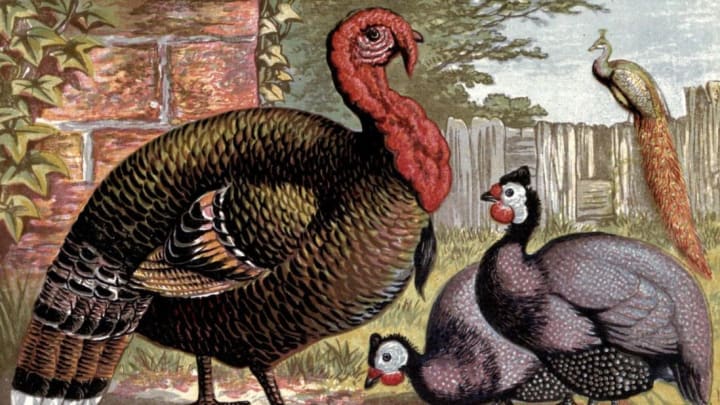Gobble gobble gobble! Whether you’re from the U.S. or abroad, you’re probably going to hear a lot about turkeys in the next few days. Here are some facts about them that you can drop during Thanksgiving dinner!
1. First off…they’re not so dumb they drown in the rain. Turkeys aren't the smartest animals, but assuming they’re “curious” about the rain is being extremely anthropomorphic—“stupid” animals react out of instinct, not curiosity. When turkeys die during storms, it’s normally because they’ve been spooked by lightning or thunder and have panicked themselves to death.
2. Eating turkey doesn’t make you drowsy. Thanks for the urban legend, Seinfeld. You know why you get drowsy after eating Thanksgiving dinner? You just ate three days worth of carbohydrates, and your intestines need all of your blood just to handle moving it through your system! Until your food gets to your small intestine to be processed, you’re gonna be drowsy.
3. Turkeys, though often associated with chickens, are much more closely related to wild pheasants and grouse. Wild turkeys are native to the Americas, just like prairie chickens and grouse. The bird that domestic chickens derive from, the Red Junglefowl (Gallus gallus), is native to the jungles of Southeast Asia.
4. Wild turkeys are actually decent flyers! Even the big, decked-out males in mating season can fly reasonably well. They don’t have much in the way of stamina (generally with a range of just over a mile at a time), but they can easily cross rivers, escape predators, and reach roosts high up in trees. Their flight can reach up to 55 mph when they’re escaping.
5. Yes, the English name of the bird and the name of the country are related. Though wild turkeys are native only to the Americas, their introduction to the British would have been from Spanish trade ships selling their wares in the Levant (an area including Turkey, Palestine, the Sinai, and other British holdings and allies in the Near East). The association with Turkey gave them their common name in English.
6. Domestic turkeys (of the large commercial variety) have been bred in such a way that their giant breasts make them literally too big to mate on their own, and as such have been artificially inseminated for decades.
7. The fleshy drape over the male turkey’s beak is called a snood, and the flesh on his neck is called a wattle. The bit of hair-like projections hanging down right below the wattle is his beard. Around the bottom of the wattle there are often fleshy bulbs that are harder and more prominent than the rest of the structure, when the turkey is not strutting or mating. Those are the major caruncles (from Latin caruncula, meaning “wart”). Females have a wattle and caruncles, but do not have a snood or beard.
This post originally appeared on Biomedical Ephemera.
